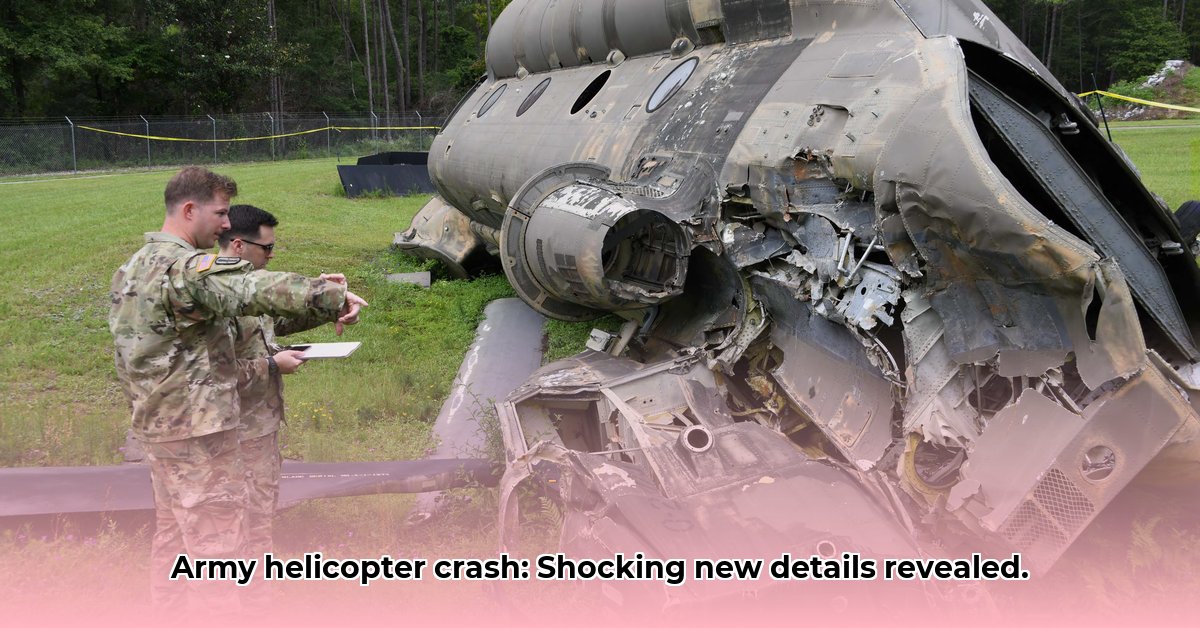Key Findings of the Army Helicopter Crash Investigation
- The January 29, 2025 crash near Washington, D.C., involved a U.S. Army Black Hawk helicopter and an American Airlines jet, resulting in 67 fatalities. The investigation focuses on several key aspects, including the helicopter’s flight path, air traffic control procedures, pilot training, and potential equipment malfunctions. What were the contributing factors that led to this tragic event?
- Conflicting accounts regarding the helicopter’s altitude and adherence to its planned route raise questions about operational compliance. Some reports indicate the helicopter was flying below the mandated 200-foot altitude, a potential safety violation. How significant were these discrepancies in the sequence of events leading to the collision?
- The investigation explores the roles of technology and human error, examining flight data recorders, air traffic control communications, and potential pilot overload. Were the pilots adequately trained to manage the complexities of a congested airspace? How did human factors intertwine with technical aspects to contribute to the accident?
Crucial Areas of Inquiry in the Army Helicopter Crash Investigation
Unraveling the Sequence of Events
The investigation grapples with fundamental questions surrounding the crash. Was the Black Hawk off course? Did air traffic control protocols function as intended? Were the pilots adequately equipped to navigate the busy airspace? These questions lie at the heart of understanding the tragedy. Key data points include the helicopter’s position at the time of impact, air traffic control recordings, and pilot training records. What critical insights can these data sources provide into the chain of events leading to the collision?
Addressing Conflicting Information
Discrepancies in initial reports complicate the investigative process. The helicopter’s altitude at the time of the collision and the number of crew members onboard are points of contention. Some experts suggest a larger crew might have been necessary for safer operation in the high-traffic area. How can these conflicting narratives be reconciled to create a comprehensive and accurate account of the incident?
Scrutinizing Technological and Human Factors
The investigation examines both technological aspects and human decision-making. Data from the helicopter’s transponder and flight data recorder are being analyzed, alongside an internal FAA report concerning air traffic control staffing at Reagan National Airport. The inquiry also delves into pilot decisions, crew communication, and the possibility of pilot overload. How effectively did technology and human actions interact in the moments preceding the crash?
Essential Strategies for Enhancing Helicopter Safety
Implementing Immediate and Long-Term Actions
The tragedy necessitates immediate changes to prevent similar events. Short-term actions include completing preliminary reports, analyzing data, and interviewing witnesses. Long-term goals involve publishing final reports with safety recommendations, improved air traffic management systems, enhanced pilot training programs, and advanced safety technologies. What specific policy changes and technological advancements can most effectively mitigate future risks?
Addressing the Role of Night Vision Goggles
A focal point of the investigation is the impact of night vision goggles worn by the Black Hawk crew. Did these goggles impair situational awareness in the brightly lit airspace? Experts will assess whether the goggles interfered with the pilots’ perception of the approaching airliner. How can night vision goggle usage be optimized to enhance safety without compromising visibility?
Mitigating the Risks of Congested Airspace
The heavy air traffic near Reagan National Airport is a significant factor. The investigation examines whether the air traffic controller’s workload was manageable and if communication protocols were sufficient. Was the existing air traffic management system equipped to handle the level of traffic? How can air traffic control procedures be refined to better manage high-density airspace and prevent similar incidents?
Implementing Proven Safety Tactics
Investigations into recent Army helicopter accidents frequently identify pilot error and insufficient training as contributing factors. Effective prevention strategies include rigorous pilot training programs, advanced flight simulators, and robust safety protocols. How can pilot training be made more realistic and effective to better prepare pilots for challenging situations? What specific safety protocols are most critical for preventing future accidents?







